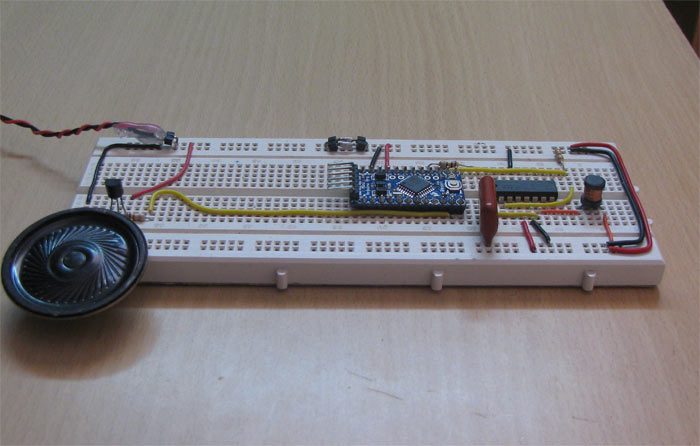
This CS209A IC available in 8 pin package and also in 14 pin package, refer datasheet for more. Proximity Detector IC CS209A pin Configuration After completing the wiring if there is no metal near sensor coil the Green side LED will glow, if you bring metal near to coil the Red LED will glow and buzzer makes noise.
#PULSE INDUCTION METAL DETECTOR ARDUINO CODE#
Arduino Metal Detector project // //Proximity Detector CS209A is used for metal detection //Writen date 5.53pm //declare Arduino Pins const int vinHi = 0 const int vinLo = 1 const int ledG = 11 const int ledR = 10 const int Buz = 13 //variable to detect state change int metalState = 0 //declare Arduino Pin Mode void setup ( ) Īfter uploading the code connect separate 9V battery to provide power to both arduino and metal detector circuit. Here the IC CS209A provides two outputs as Out1 from pin 4 (which is normally High) and Out2 from pin 5 (whis is normally Low), you can use any one or both with Arduino, here the example Arduino sketch utilizes the Out 1 only. Unlike VLF technology, pulse induction metal detectors use one coil i.e. which depends in turn on the principle of electromagnetic induction. The Sensor coil 100μH is made as 40mm in diameter and 50 turns by 0.4 mm insulated copper wire and there is no need for core inside the coil. Pulse Induction (PI) Pulse induction metal detectors are electronic devices that operate according to the pulse induction technology. Metal detector coil gets oscillation signal from internal oscillator circuit, in terms of Inductance it can be mathematically stated as. Most metal detectors use a search coil that. The basic magnetic flux reflection and LC Inductance change or some times pulse induction or back emf produced in the sensing coil is detected by the circuit and the difference signal is separated and amplified enough then if there is any difference the Alert indicator circuit will be triggered. A Maker by the name of Dzl (and son) recently built his very own metal detector using an Atmel-based Arduino.

It is intended primarily as a learning platform for experimenters, and as a base design on which to expand.

The above illustration is enough to make you understand about the operations of metal detectors. Hammerhead is a pulse induction (PI) metal detector design. has some wear to the stem due to use but appart from that it is in very good condition. Arduino nano pulse induction metal detector. It is a bipolar monolithic integrated circuit and best suitable to metal detection & proximity sensing applications. Arduino Nano Pulse Induction Metal Detector Projec. Normally, this is 1M/1K 1000x if you have a single amplifier.

One of the reasons of your low sensitivity might be the 10x flyback pulse amplifier. In this article Arduino metal detector circuit is composed with proximity detector IC CS209A. I built quite a few PI detectors myself, based on Microchip PIC controllers. Metal detectors are ensures our safety in many ways and also this metal detection technique can be used in many application or process oriented projects.


 0 kommentar(er)
0 kommentar(er)
